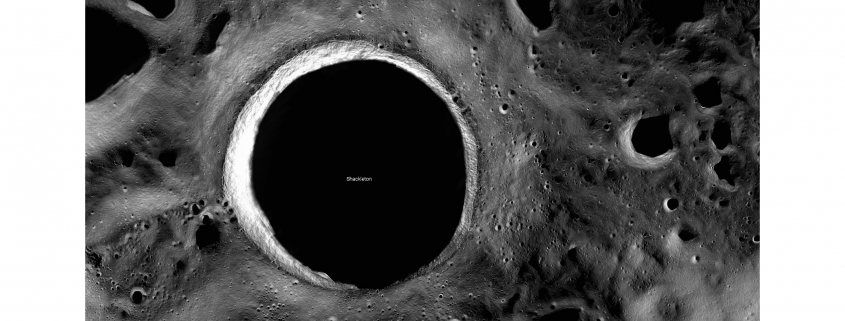Friday 10th Sep 2021 at 7.30 pm on Zoom
The Lunar South Pole Environment
Dr Daniel Batcheldor
Senior Scientist and Subject Matter Expert in Physics as a contractor at NASA’s Kennedy Space Center
Image credit: (c) JPL/NASA Moon Trek
Humanity is preparing to return to the moon; this time not simply as tourists. Lunar regolith (dust) presents a risk when landing and operating anywhere on the lunar surface, but at the south pole this same material may also become a resource. However, the lunar south pole presents other interesting risks and opportunities particularly when it comes to the impact of the Sun. The perpetually low Sun angle, as it tracks around the horizon, will provide almost constant illumination for surface operations and photovoltaic power systems, but it may also generate a complex electromagnetic environment. In addition, large areas of the lunar surface will be in permanent, or near permanent shadow. Such shadows may be the location of significant resources but they may also hamper surface operations. In this talk, the effects of dust and the sun angle on lunar surface operations will be discussed, and technologies currently under development to help alleviate some of these issues will be presented.
Dr. Dan Batcheldor, astrophysicist, is a Senior Scientist and Subject Matter Expert in Physics as a contractor at NASA’s Kennedy Space Center. He was previously the Head of the Department of Aerospace, Physics and Space Sciences at the Florida Institute of Technology. He moved to the US in 2004 and won multiple opportunities to use the Hubble Space Telescope. His research has covered all the sci-fi classics of Black holes, planets around other stars, and Mars. He is currently supporting the Artemis mission to land the first woman and first person of color to the lunar south pole in the coming years.
Dr. Batcheldor attended the University of Hertfordshire after coming up through King Edward’s School on Broad Street and North Road. He is author of “Astronomy Saves the World: Securing our Future Through Exploration and Education” that advocates for the introduction of astronomy as part of core school curricula, thus improving the scientific literacy of the general public.”
The video recording of this lecture is now freely available on the Virtual BRLSI YouTube channel. Please go the following link to view.
The Lunar South Pole Environment



